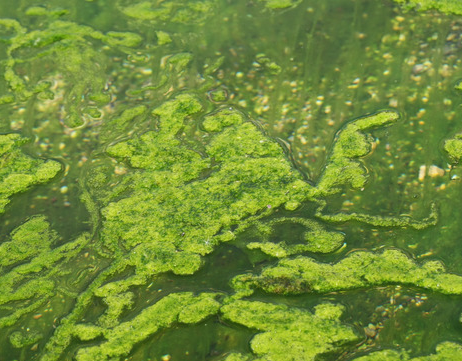When looking at the old fishing hole or stock tank, if there’s a thick mat of bubbly yellow green substance floating on the surface of the pond, or the pond appears to be colored bright green, blue-green, or sometimes even red, then there may be an algae problem. Algal overgrowth is one of the most common issues plaguing pond owners. The first step to effective algae management is to understand what type of algae resides in the pond. There are three different types of algae commonly found in farm ponds and small lakes: planktonic algae, filamentous algae, and macroalgae. Planktonic algae are the kinds of algae pond owners actually WANT and the fish NEED! It is important to manage and promote planktonic algae to build good fish populations because they provide food and oxygen for fish. Clear water is not good if pond owners desire a good fishery. Clear water is the equivalent of a disked, fallow field with little vegetation. Just like many cattle can’t be raised well on a fallow field, fish can’t thrive in clear water. Now imagine a lush rye-grass field twelve inches tall. A lot more cattle can exist in this field because it has the food they need. The same is true with green water—many more fish can survive because it contains the food they need. In order to properly manage planktonic algae, provide nutrients the same as one would for the grass used for cattle forage.
Strive to maintain hardness and alkalinity above 30 ppm, which means agricultural limestone (ag lime) may need to be added to the pond every 3 to 7 years. The quickest way to treat algae in ponds is with copper based algaecides such as chelated copper complexes or copper sulfate. However, integrated management practices are the most effective way to manage algae in ponds and prevent it from quickly returning after an algaecide treatment. A combination of the following typically produces more effective, long term algae control: aeration; creating a 10’ to 20’ buffer zone around he pond with taller vegetation to filter excess nutrients; decreasing the amount of fertilizer used on lawns and forage fields near the pond; preventing livestock from defecating in or near the pond; locating septic fields far away from ponds; deepening the edges to a slope of 2:1 decline; or a chemical treatment followed by a fertilization program for the good planktonic algae in the pond.
For more information on this or any other agricultural topic please contact the Hopkins County Extension Office at 903-885-3443 or email me at [email protected].






